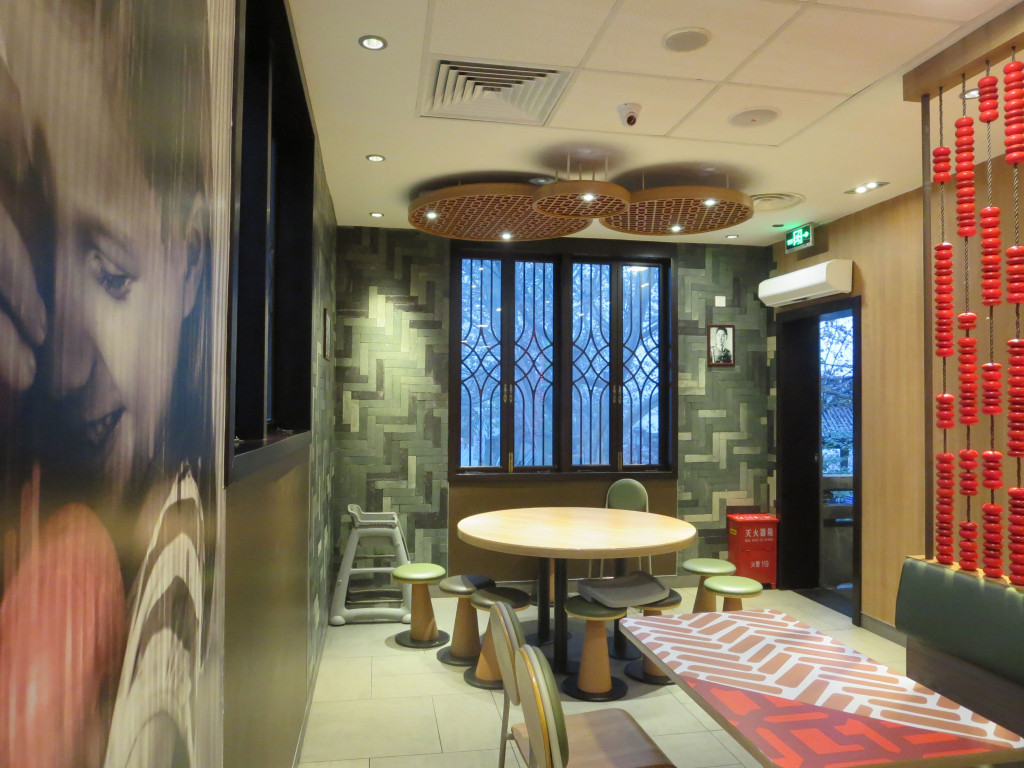In Hangzhou, on the banks of the historic and scenic West Lake, is a house. The son of Chiang Kai-shek, Chiang Ching-kuo 蔣經國, lived there for a short time with his family in the 1940s. The house is a nice example of architecture from the Republican period.
There’s a plaque commemorating the site as an historical landmark.
So what’s the catch? The house is in a very busy commercial area, on a main thoroughfare. Preserving the house and maintaining it is very costly. Apparently, no one wanted to take on the responsibility, so a commercial enterprise bought it and converted it to a business.
I have very mixed feelings about this. Of course, it’s wonderful that the house is being preserved, and it’s available for the public to see. And it’s decorated very tastefully. The Starbucks is especially nice inside.
However, imagine if someone wanted to open a McDonald’s franchise inside a house that George Washington once lived in. I think there would be some public protest, even outrage.
But what if the house were about to be torn down, and McDonald’s promised to preserve the house as much as possible? That was the dilemma that this house faced.
In the end, in this case, maybe being turned into a fast-food restaurant was the price of historical preservation. I don’t know if the price was too high, but I do know that I appreciated being able to see the house, even if I had to buy a hamburger in order to see it.
And I’m not even going to touch the irony that the commercial enterprise that rescued this piece of Chinese history is the symbol of American cultural hegemony.








